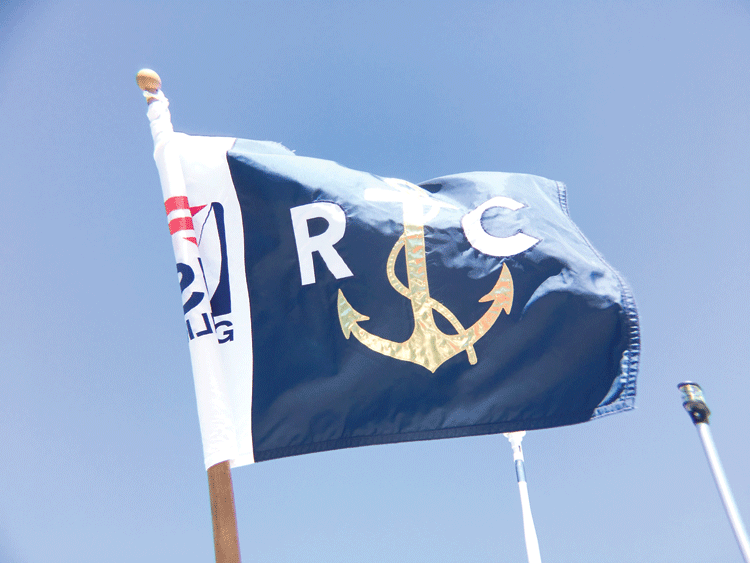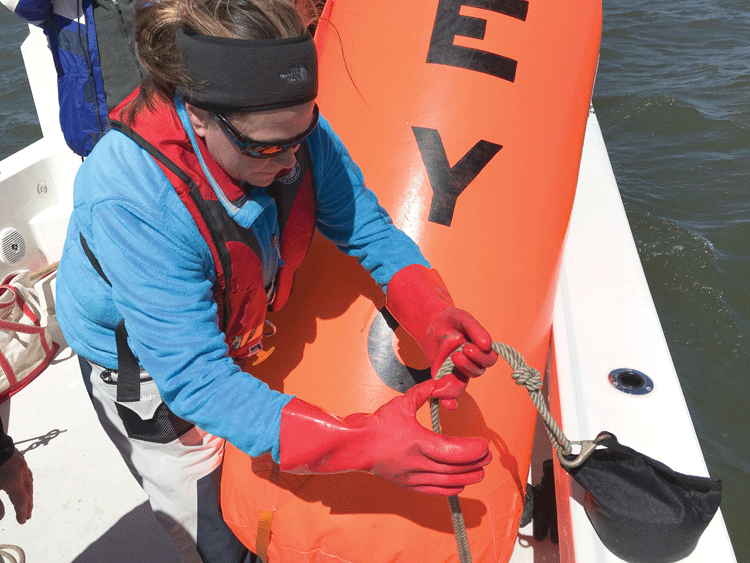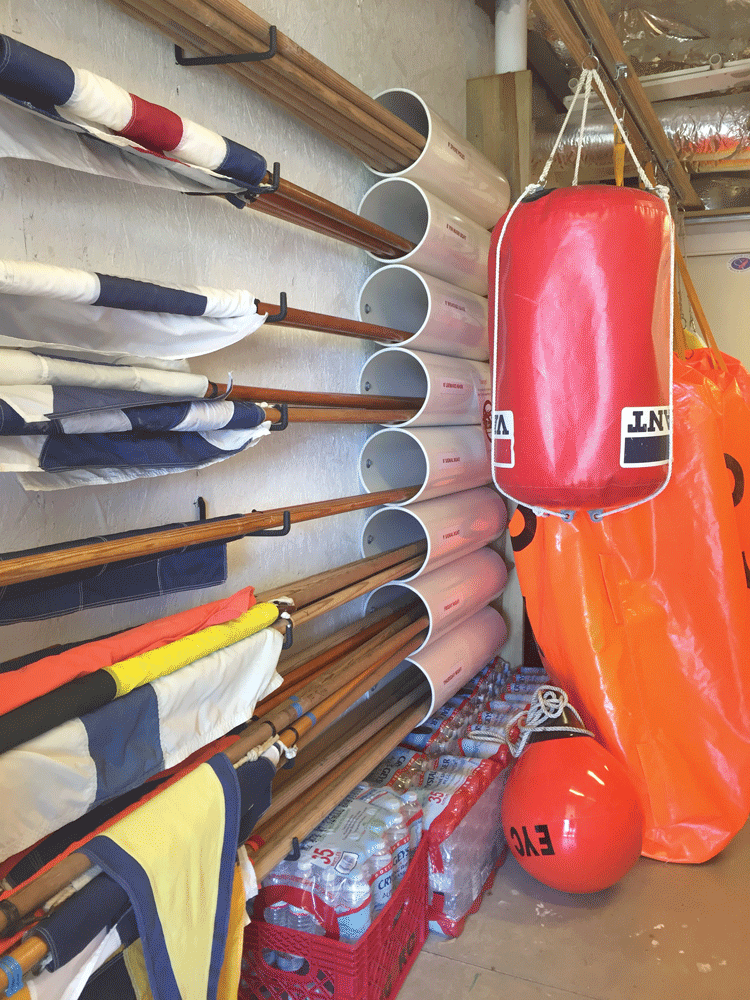On a blustery Saturday in early April, I showed up at Eastport Yacht Club (EYC) for Race Committee Training Day, the idea being I would learn a bit about race management and then get an opportunity to see the course from the committee boat. My journey took me from the classroom to the water, and then back out on the water during the wet and windy Helly Hansen Annapolis NOOD Regatta. I came away with a much deeper understanding of sailboat racing and some new skills.

The first thing I learned was that a race committee (RC) is comprised of roughly three boats crewed by volunteers who fill 10 different positions, each with unique and critical responsibilities. The signal boat acts as the mothership and hosts the bulk of the personnel, including the Principal Race Officer, or PRO who is responsible for the safe and proper conduct of races. The signal boat crew handle flags, sounds, timing, recording, scoring, and line sighting.
Supporting the signal boat are the windward and leeward mark boats. The crews consist of a captain and one or two assistants who take wind readings, set and retrieve marks, and record boats as they round. Mark boats maneuver a lot, so they are generally smaller than the signal boat, which translates to a bumpier ride with fewer creature comforts.
The morning was spent in the classroom going over the equipment and various roles on each boat. Then, it was time for on-the-water training. It was too cold and splashy for the Harbor 20s, who had earlier volunteered to simulate a start, so we settled for taking wind readings and dropping marks.
We donned our foul weather gear, down to the dinghy boots and the thick, rubber plumber’s gloves recommended by the veteran “anchor yankers.” We set some marks. And retrieved them. And set them again. My shoulders were sore the next day, but those gloves really saved my hands.

One month later, I was invited back for the NOOD. Saturday was a rainy mess with four-foot seas. EYC was handling RC for the Vipers and the J/70s, two highly competitive fleets, racing in conditions at the edge of what is considered safe. I was glad to be assigned to the signal boat, which had a nice big cabin where we could huddle to stay dry.
After a delay to let a storm pass and the wind pick a direction, the RC set a course. The conditions at the weather mark drive the course, and both mark boats were in constant radio contact, communicating wind data, and compass readings to insure the line was square. One objective of a delayed start is to avoid moving everything in the middle of a race. If a change is needed between races, the preference is to pivot the course rather than pull the gear.
With the rough seas, it took a few tries to get the various marks and offsets in place, but at last we were ready to go into sequence. Competitors were swarming the signal boat like sharks, shouting their bow numbers and trying to get a good shot of the line on their instruments. It was hard to hear the radio over the snapping of everyone’s sails, and it was even harder to sight the line.
I was assigned the “x-ray” flag, which is hoisted when one or more boats are determined to be “on course side” (OCS) before the gun. Large, aggressive fleets make for a high likelihood of OCS competitors, and it took three people to call boats, record them, and hoist the flag.
Note to racers: if RC calls you over, don’t argue that your GPS is more accurate than several sets of trained eyes. The reality is instruments can be off by a meter or more.
After two busy starts with lots of boats OCS, a general recall, and a pennant error, it was a relief to have all the competitors out on the course. But there wasn’t much time to rest before the first fleet was barreling downwind on its final leg. As soon as we finished one class, it was time to start them again, except now we had the other fleet finishing. The skipper called finishers on starboard, while the timer counted down the start on port. It was an exercise in controlled chaos, reinforcing the importance of keeping clear of the line if your class isn’t starting or finishing.

Sunday was shorter, with only two races, per the sailing instructions. The conditions were sunny and dry, but the winds were in the low 20s with gusts to 30 knots.
The PRO gave me permission to go out on the leeward mark boat, and I took wind shots and recorded mark roundings. Most of the Viper fleet stayed ashore, but the J/70s came out in full force. We set up two separate starting lines to accommodate the size difference between the classes.
Wind and current can cause marks to travel, and both days marks went for a walk. Fortunately, we were able to re-set the buoys before they were needed, but sometimes it’s not possible. If you see a powerboat anchored where a mark used to be, check for the “mike” flag (missing mark) before you shout at them to get off the course.
All sorts of shenanigans happen during a race. Boats foul each other at the mark, or fail to come back when they’re OCS. Sometimes they register under the wrong sail number, or they fail to apply the regatta decals correctly. The RC always has extra eyes on the line, and at the mark. Everything is recorded in case there’s a protest hearing. Our division wrapped up the NOOD with five races for each class, and everyone made it back to the dock in one piece.
I had a lot of fun. RC personnel are passionate about sailboat racing. They pride themselves on good seamanship, and they thrive on competition. There was problem-solving, execution, and teamwork; plus we had front-row seats to the most action-packed moments. There’s always a push to train new volunteers, so if interested, reach out to your club’s committee chair.
by Leslie Toussaint




